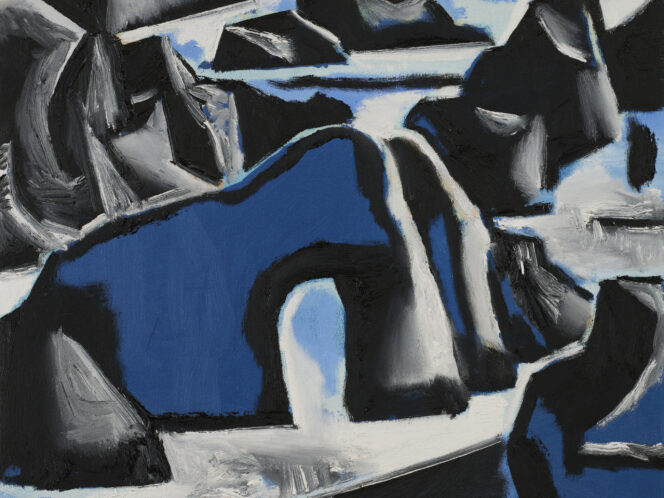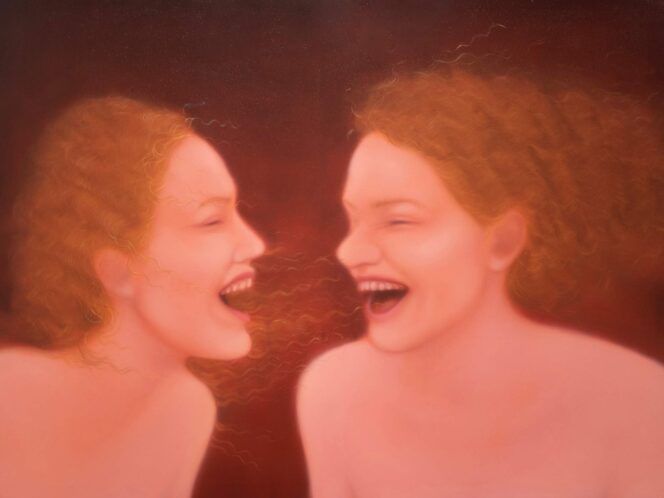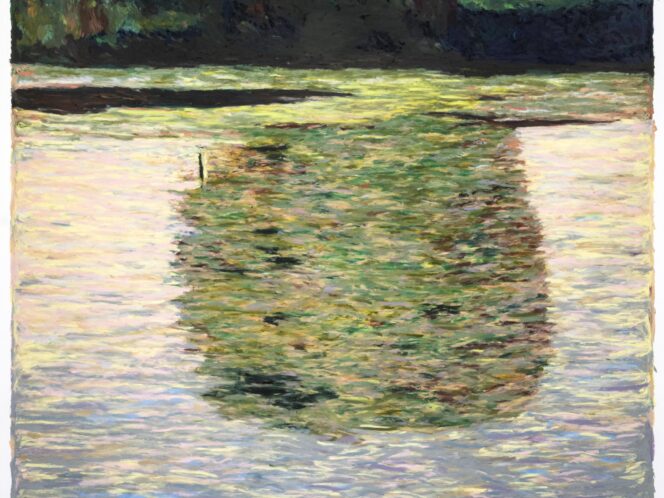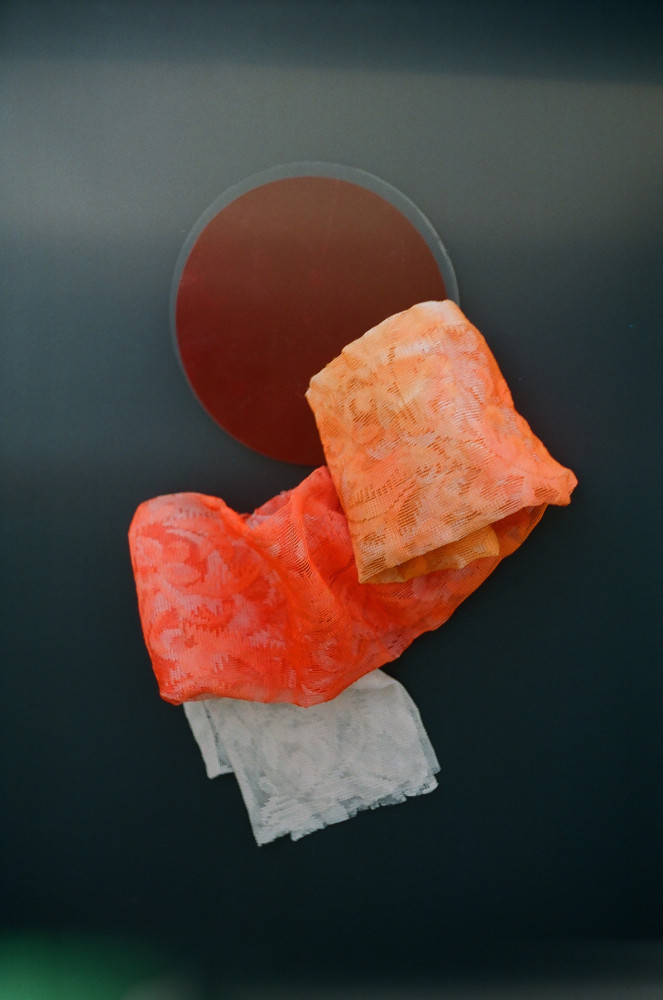
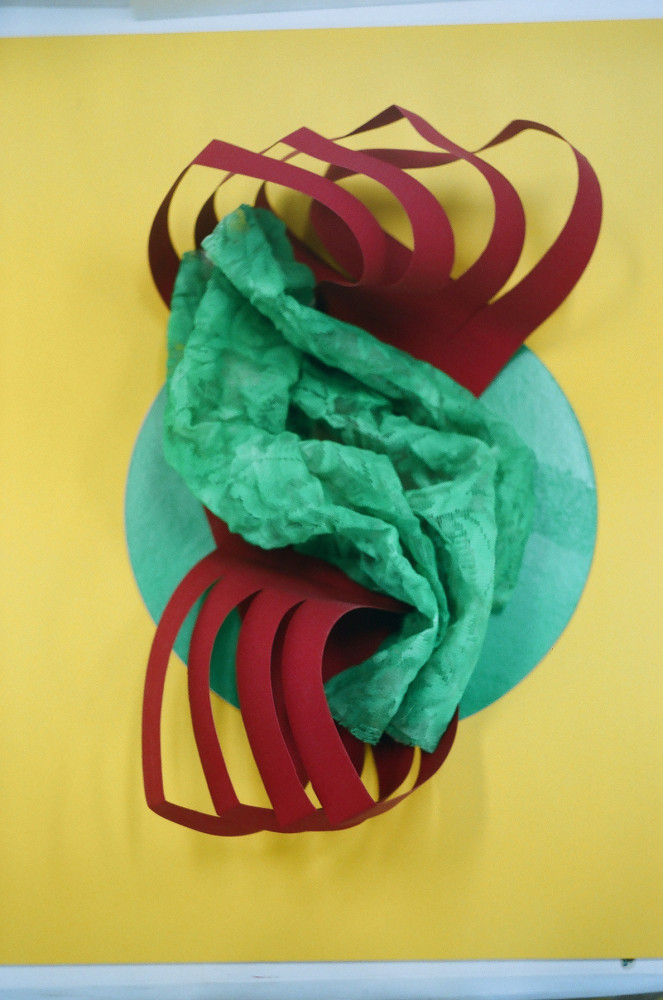
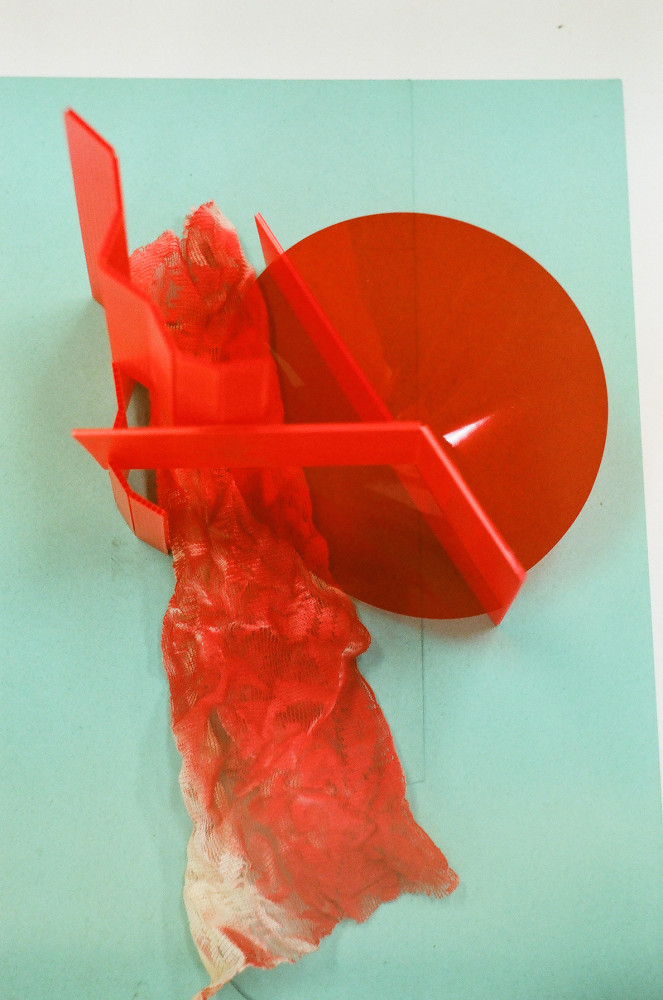
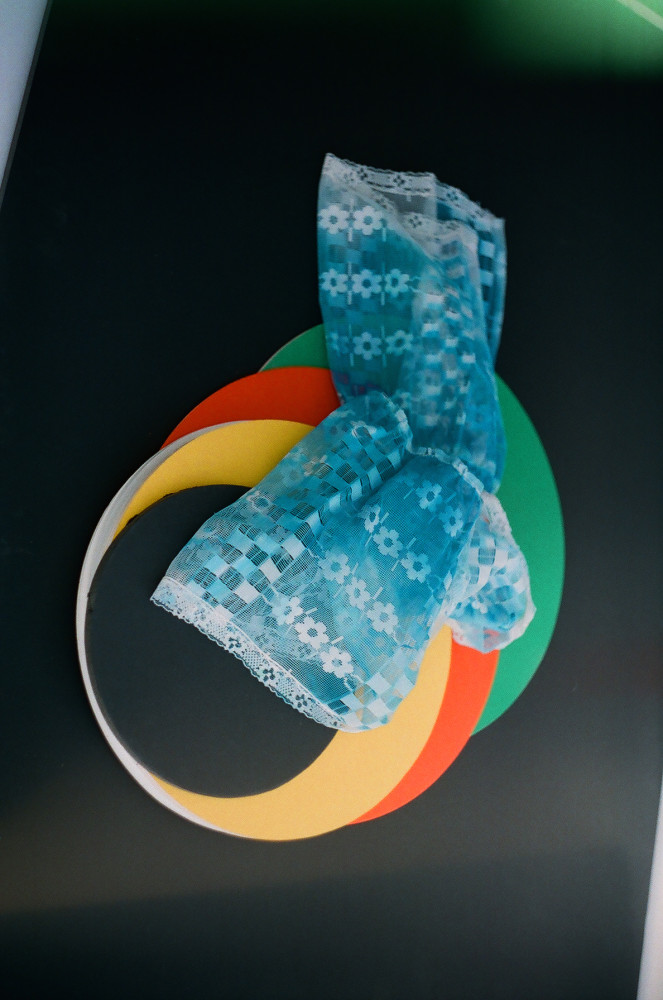
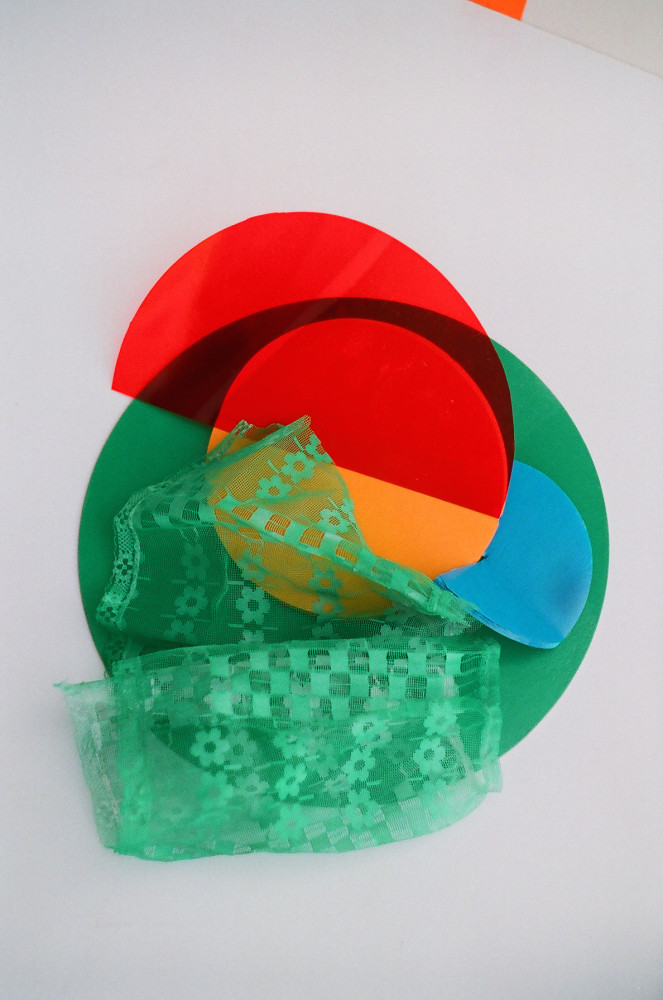
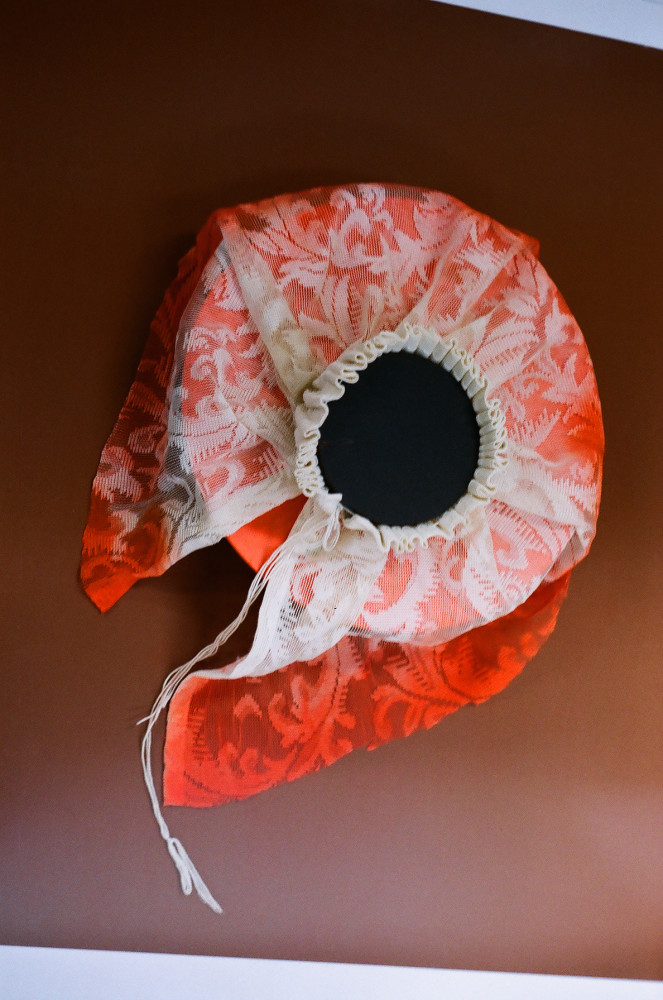
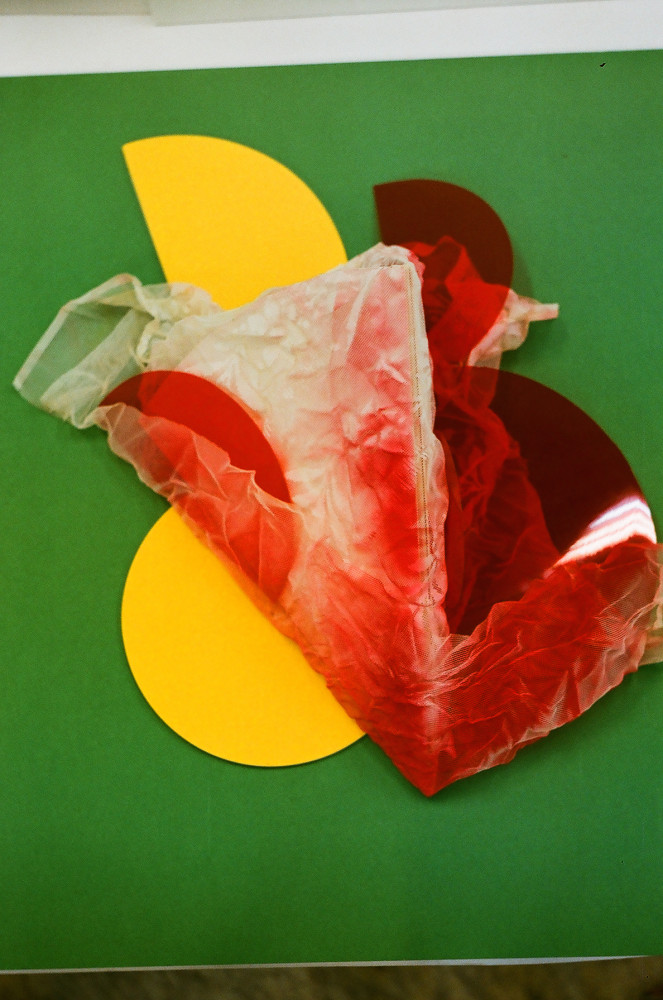
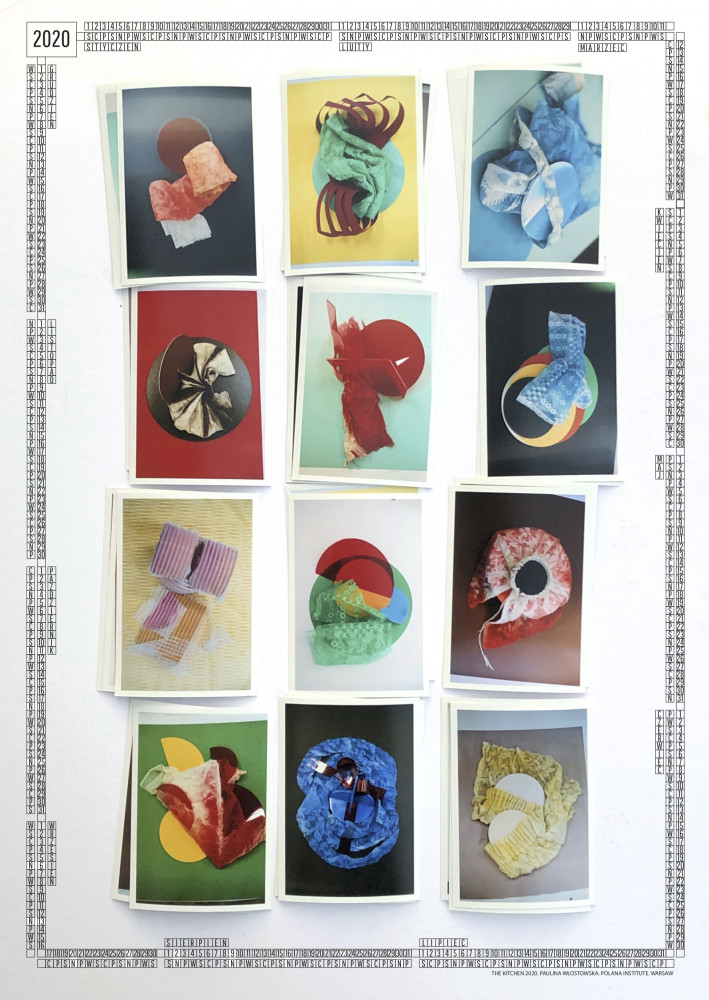
Paulina Włostowska’s collection of items from a kitchen consists of curtains, a tablecloth and textile objects made of materials associated with the kitchen (curtain, fabric dyed in onion, starch). “”
Włostowska draws her formal inspirations from post-war industrial design created by women designers. The artist analyses the meaning of decorative fabric in kitchen spaces as a hyperbole of female emotions, projections and creations. The artist’s work is in line with the trend of thinking about kitchen design by women for women as an expression of social change. This is complemented by the kitchen calendar for 2020.
Text accompanying the exhibition “The Kitchen” at the Polana Institute gallery, which took place in Clay Warsaw space, as part of the 10th edition of the Warsaw Gallery Weekend.
Paulina Włostowska – a visual artist, graduated from the Painting Department at the Academy of Fine Arts in Warsaw. Paulina Włostowska commits to a comprehensive analysis of the relation that occurs between fine art and the applied, manufactured and handcraft matters, and further reflects on these connections in her artistic practice. As an artist, Włostowska follows a dual path on a daily basis: next to her autonomous painting, she also actively engages in commercial projects, such as making on-site advertisements, custom murals and lettering. The attachment to craftsmanship greatly influences her method of work, which is often based on the use of collected objects and materials
In June 2020 Włostowska’s individual exhibition “Papieroplastyka” with Polana Institute took place, in Warsaw’s Muranów district. For the project, she reinterpreted the space of retail and service, existing in the spirit of the craftspeople’s pavilions of the early 1960s. Paulina Włostowska’s “shop” combined artistic forms and objects with utilitarian ones. Behind its conscious stylization, we sense the artist’s passion for manual production, her sentiment for forgotten or underestimated artistic techniques, deep interest in the material, and confidence in the manual proficiency required for analogue design methods and the execution thereof.



